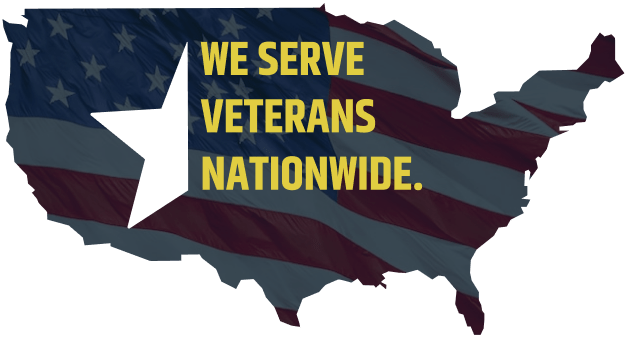
VA Ratings for Anxiety
Anxiety disorders are common, among veterans and non-veterans alike. Millions of Americans suffer from generalized anxiety disorders, and millions of others are affected by more specific anxiety disorders. Anxiety has many causes, and not every case of anxiety in a veteran is service-connected. However, if you can show that your anxiety is service-connected, you may be entitled to VA disability benefits.
Depending on how serious the condition is, you may receive a disability rating of 0%, 10%, 30%, 50%, 70%, or 100%. The benefits you may receive vary with your disability rating. Below you can find out how those ratings are determined.
VA Disability for Anxiety
The schedule of ratings for mental disorders includes several anxiety-related conditions such as:
- Generalized anxiety disorder
- Social phobia (also known as social anxiety)
- Obsessive compulsive disorder
- Other specified anxiety disorders
- Unspecified anxiety disorder
- Post-traumatic stress disorder
- Panic disorder
- Agoraphobia
All of these disorders are assessed under the General Rating Formula for Mental Disorders.
How is This Rated As A Disability?
The disability rating options for service-connected anxiety disorders start at 0%. A 0% disability rating is assigned if the veteran:
- Has been diagnosed with a service-connected anxiety disorder, and
- Does not have symptoms serious enough to either interfere with occupational and social function or require continuous medication
At the 0% level, a veteran doesn’t receive any monthly compensation. But, it may still be worth establishing the rating. Even a veteran with a 0% disability rating is entitled to free VA healthcare services in connection with the service-connected condition. And, if the condition worsens, it may be quicker and easier to increase the rating than to start a claim from scratch.
All other possible disability ratings for anxiety mean at least a small amount of monthly compensation. As the disability rating increases, there may be additional benefits as well.
10% Disability Rating for Anxiety
A 10% disability rating will be assigned for service-connected anxiety if:
- The victim is occupationally and socially impaired by transient symptoms, where the ability to perform occupational tasks is only diminished when the veteran is under significant stress, or
- The condition is controlled by continuous medication
30% Disability Rating for Anxiety
There is no 20% disability rating for anxiety. A 30% disability rating is assigned when:
- The veterans work efficiency and ability to perform occupational tasks are intermittently impaired, and
- That impairment is caused by symptoms such as anxiety, suspiciousness, panic attacks, mild memory loss, and chronic sleep impairment
50% Disability Rating for Anxiety
There is no 40% disability rating for anxiety. A 50% disability rating is assigned when:
- The anxiety causes occupational and social impairment with reduced reliability and productivity, and
- That finding is supported by symptoms such as panic attacks more than once a week, difficulty understanding complex commands, impaired memory or judgment, and difficulty maintaining relationships
70% Disability Rating for Anxiety
There is no 60% disability rating for anxiety. A 70% VA disability rating is assigned when:
- The veteran experiences occupational and social impairment in most areas of life (work, school, family relationships, judgment, thinking or mood), and
- The finding of impairment is supported by symptoms such as obsessive rituals, near-continuous panic, impaired impulse control, intermittent irrelevant or illogical speech, and difficulty adapting in stressful circumstances
100% Disability Rating for Anxiety
There is no 80% or 90% disability rating for anxiety. A 100% disability rating is assigned only when:
- The veteran suffers total occupational and social impairment, and
- The finding of impairment is supported by symptoms such as persistent delusions or hallucinations, serious impairment of thought processes, serious impairment of communication, disorientation of time and place, persistent danger of hurting themselves or others, and loss of memory for names of their own name or occupation or the names of close relatives
A veteran may also receive benefits for anxiety at the 100% disability level without a 100% rating if they are deemed totally disabled due to individual unemployability. That means that although they aren’t rated 100% disabled, they’re unable to earn a living due to the service-connected disability.
With rare exceptions, total disability due to individual unemployability (TDIU) requires either a single disability rating of at least 60% or a combined disability rating of at least 70% with one condition rated at least 40%. Since there is no 60% rating for anxiety, a veteran seeking TDIU classification for anxiety alone would need a 70% VA disability rating.
Benefits by VA Disability Rating
Your VA disability rating determines the benefits you are entitled to, and the difference from one level to the next can be significant. Here’s what the rating levels above mean in terms of VA disability benefits:
- At the 10% level, a veteran receives medical care for the service-connected condition and a small monthly disability benefit. In 2024, it’s $171.23/month.
- At a 30% disability rating, the veteran receives partial monthly benefits in the amount of $524.31 and VA medical care for the service-connected condition. Unlike veterans with 0-20% disability ratings, a veteran whose rating is 30% or above may receive increased benefits if they have qualifying dependents.
- With a 50% disability rating, the veteran will receive monthly benefits of $1075.16, with a possible increase for qualifying dependents. At the 50% level and above, the veteran is also entitled to broader healthcare services.
- At the 70% level, the veteran receives partial benefits in the amount of $1,716.28/month, with a possible increase for qualifying dependents. The veteran is also entitled to the same expanded healthcare services that begin at the 50% level.
- At the 100% level, the veteran receives full monthly benefits. In 2024, that means $3,737.85/month with a possible increase for qualifying dependents. At the 100% rating, the veteran also receives no-cost healthcare. And, if the rating is permanent, there may be additional benefits for family members.
Establishing Your VA Disability Rating for Anxiety
Proving that you are disabled by mental health conditions and the degree of that disability can be challenging. It’s the veteran’s responsibility to prove that they suffer from the condition, that the condition is service-connected, and that they suffer from symptoms and limitations that warrant a particular disability rating.
The best way to ensure that you don’t miss a step or make a mistake that sets back your claim is to work with an experienced VA disability benefits advocate. At Disabled Vets, our team is fully dedicated to helping veterans and their families secure the benefits they deserve. Our advocates understand the VA disability claims and appeals processes and know what type of evidence is necessary to support your claim.
To learn more about how we can help, call us today at (888) 373-4722 or fill out our contact form.



